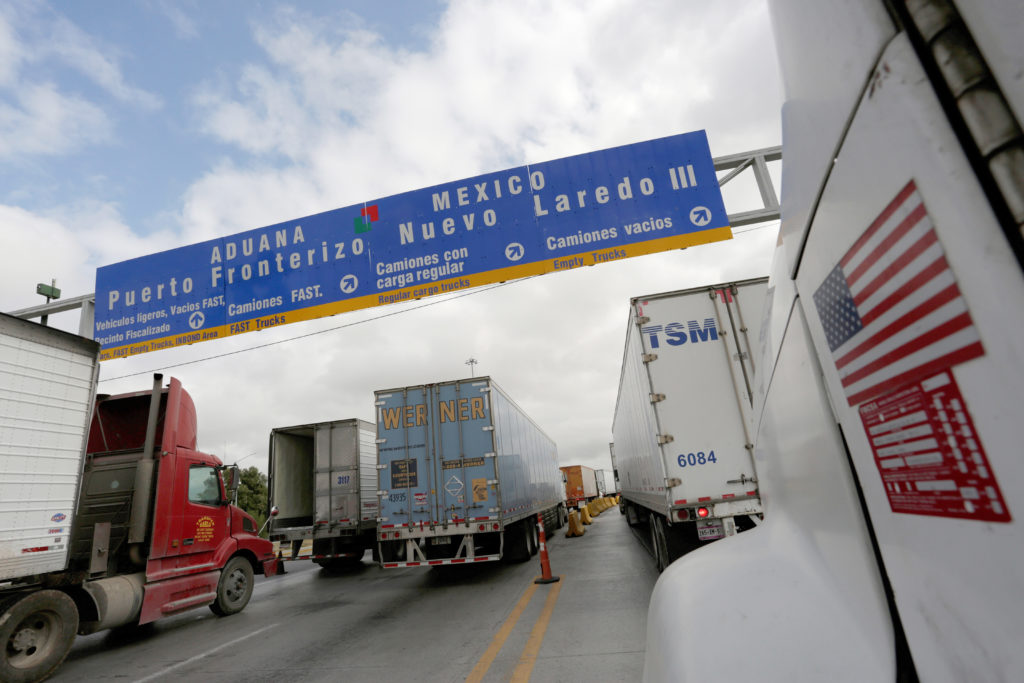I’m currently in Houston to attend a customs conference, where I expect there will be lots of talk about China, coronavirus, and the related disruptions to trade. Yet Mexico has also been on my mind. That is due to some extent to being in what, until not that long ago, was Mexican soil, but the main reason is that the coronavirus crisis is pushing to the fore questions that I (and many others) have pondered for a long time: Why aren’t U.S. companies manufacturing and buying more in Mexico?
To be sure, U.S.-Mexico trade is huge and our manufacturing lawyers drafted more Mexico manufacturing contracts in the last year than in the previous two years combined. According to the United States Trade Representative:
U.S. goods imports from Mexico totaled $346.1 billion in 2018, up 10.6% ($33.3 billion) from 2017, and up 60.3% from 2008. U.S. imports from Mexico are up 767% from 1993 (pre-NAFTA). U.S. imports from Mexico account for 13.6% of overall U.S. imports in 2018.
However, after more than 15 years of helping U.S. companies with their China-related headaches, I’m surprised these figures aren’t even higher. Consider some of the country’s advantages, as discussed in 2013—before coronavirus, before the trade war—in the context of a company’s decision to shift manufacturing from China to Mexico:
About two years ago, Melissa Palmer, CEO of a company called Hoopnotica, made a shocking discovery. Chinese factories were producing knockoffs of her company’s $50 travel Hula-Hoops and selling them on Alibaba and other international wholesale websites on the cheap. Palmer, a partner in the $1.5 million Venice, California-based company, sent cease-and-desist letters to the sites, with little success. “It’s infuriating,” she says.
When Palmer was unable to find a U.S. factory to produce the hoops, a business associate recommended a facility in Mexicali, a Mexican border town just a three-hour drive from Venice. “I made the mistake of not going to China to take action faster,” Palmer says. “Now I can zip down to the factory in a day.”
…Hoopnotica is one of the growing number of U.S. businesses bringing manufacturing back to the U.S. or “near-sourcing” it to Mexico. The country has been losing manufacturing to China for years. But things are changing now that the value of the Chinese yuan is rising, the cost of overseas shipping has surged, and increased competition among Chinese factories has resulted in labor shortages and longer lead times.
Thanks to the North American Free Trade Agreement, goods imported from Mexico can enter duty free. Mexico also has a strong reputation for protecting intellectual property, a valuable advantage over China.
The RMB exchange rate fluctuates, as do shipping costs (though in any case it’s cheaper to import from nearby Mexico), but to the 2013 prognosis you should add “U.S. tariffs… rising labor costs, stiffening environmental rules, and the heavy, often capricious hand of the Chinese state”.
Historically, some foreign companies have favored China (and other Asian destinations) over Mexico due to Mexico’s higher wages, stronger labor law enforcement, and security concerns. Mexico’s new president isn’t helping matters either. As Bloomberg puts it, “Its once-business-friendly environment is looking much less so”.
Concerns over security no doubt persist, particularly in areas along the northern border, which have the greatest geographical advantages when it comes to U.S. trade. That said, the security situation is far from uniform. For example, a June 2019 survey by the National Institute of Statistics and Geography found that 83% of Acapulco residents considered their city unsafe, compared to 48.9% in Tampico, 43.1% in Puerto Vallarta and 30.2% in Mérida. In any case, security risks can be managed, as the many foreign companies operating in Mexico demonstrate. Moreover, China poses its own risks for foreign businesspersons.
As for labor costs, things have changed considerably since 2013, when “Mexico’s wages [were] 40 percent higher than China’s, at about $3.50 an hour”. According to the International Labour Organization (yes, British spelling), in 2018, the average monthly earning of Mexican employees was $338.42 at today’s exchange rate. Meanwhile, by 2016 (the most recent year for which ILO statistics are available), the equivalent figure in China was $808.33.
Mexico is far from being a world leader when it comes to labor protections, but these are more robust than in China, which reduces the potential for legal and reputational problems. In Forced Labor in China: Don’t Trust AND Do Verify, we recently wrote about withhold release orders (WRO) issued by U.S. Customs and Border Protection in cases of suspected forced labor. At present there are only two WRO outstanding against Mexico, both against the same producer—and dating back to the fifties! By contrast, there are two dozen WRO in place against Chinese manufacturers.
Then there is the new president, Andrés Manuel López Obrador (AMLO). Under his leadership, “the government is slashing investment in the kinds of infrastructure manufacturers need (and that China has been so exceptional in providing)”. AMLO’s labor reform and minimum wage hike may also give foreign investors pause. But as the Miami Herald notes, though AMLO may prove ineffectual in addressing Mexico’s most pressing challenges, he will not “destroy the prowess of Mexico’s private sector”.
Could you say the same of Xi Jinping?
It’s interesting to consider why NAFTA’s potential has not been more fully realized and why the China siren song proved so difficult to resist for so many U.S. companies. But we’re in a different world now. As it becomes tougher for foreign (and especially U.S.) companies to do business in China, as dreams of tapping into the billion-customer market become nightmares, and as the country reels from the economic devastation brought on by coronavirus, the appeal of free-trade partner Mexico is bound to increase. Is it time you make a run for the border?

























